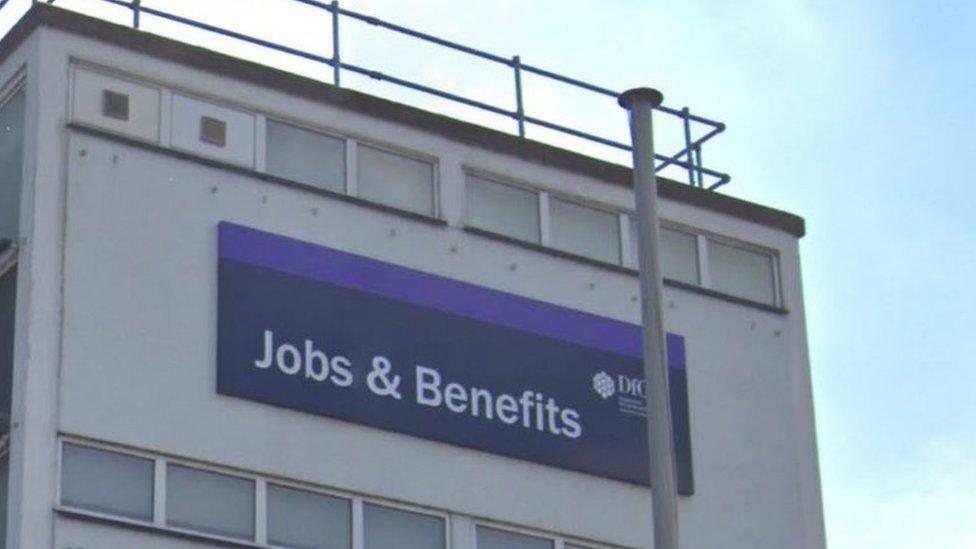Coronavirus: Unemployment in NI rose by almost 90% in April
- Published
- comments

Unemployment in Northern Ireland rose by almost 90% in April, official figures suggest.
The figures from the NI Statistics and Research Agency (Nisra) are the first official indicator of the impact of coronavirus on the NI economy.
They show that claimant count unemployment increased from 29,700 to 56,200.
That is the highest monthly increase since records began and brings the claimant count back to 2014 levels.
Claimant count includes Jobseeker's Allowance Claimants and those claimants of Universal Credit who were claiming principally for the reason of being unemployed.
The other, preferred, method of measuring unemployment is the Labour Force Survey (LFS).
However, the current survey results only cover the period from January to March so do not capture the impact of the coronavirus lockdown.
Across the UK, figures released by the Office for National Statistics (ONS) show the claimant count in April went up by 856,500 to 2.1 million.
Speaking in the assembly on Tuesday, Communities Minister Deirdre Hargey said new claims for Universal Credit have gone up by nearly 300% since the Covid-19 crisis began.
Ms Hargey told MLAs that since 16 March her department was dealing with 71,000 cases and it had seen new claims for the benefit increase by 294%.
She also told MLAs there had been a 110% increase in claims for Jobseeker's Allowance.
Ms Hargey told the assembly that her department has made 140,000 payments and was dealing with 7,900 claims a week.
'Not surprising'
Nisra also record the number of proposed redundancies.
In April there were 783 proposed redundancies, the fifth largest monthly figure in the last five years.
Speaking on the BBC's Good Morning Ulster programme, the director of Ulster University's Economic Policy Centre said it "is not wholly surprising".

Gareth Hetherington is director of Ulster University's Economic Policy Centre
Gareth Hetherington said: "There are two factors which characterise this crisis: one is the scale of the impact, the second is its immediacy.
"What happened in the financial crisis took a long time to play out compared to what we've seen in this Covid-19 crisis."
Mr Heatherington said a "big test" will be when the government's furlough scheme ends in October, when "we will be reliant on the level of demand that's in the economy and people's willingness to go out and spend".
Millions of workers across the UK are currently furloughed - not at work but with the government paying 80% of their normal wages, up to a limit of £2,500.
He added: "Economic recovery starts with the lifting of restrictions and, encouragingly, there seems to be growing recognition that it's not a simple choice between maintaining a lockdown and saving lives on the one hand or lifting restrictions and saving the economy on the other.
Mr Heatherington said there is a need for retail, hospitality, construction and manufacturing sectors to return to work at "a viable level in the short term, but long before October".

A SIMPLE GUIDE: How do I protect myself?
AVOIDING CONTACT: The rules on self-isolation and exercise
LOOK-UP TOOL: Check cases in your area
MAPS AND CHARTS: Visual guide to the outbreak

- Published11 May 2020

- Published14 March 2020

- Published25 April 2020
